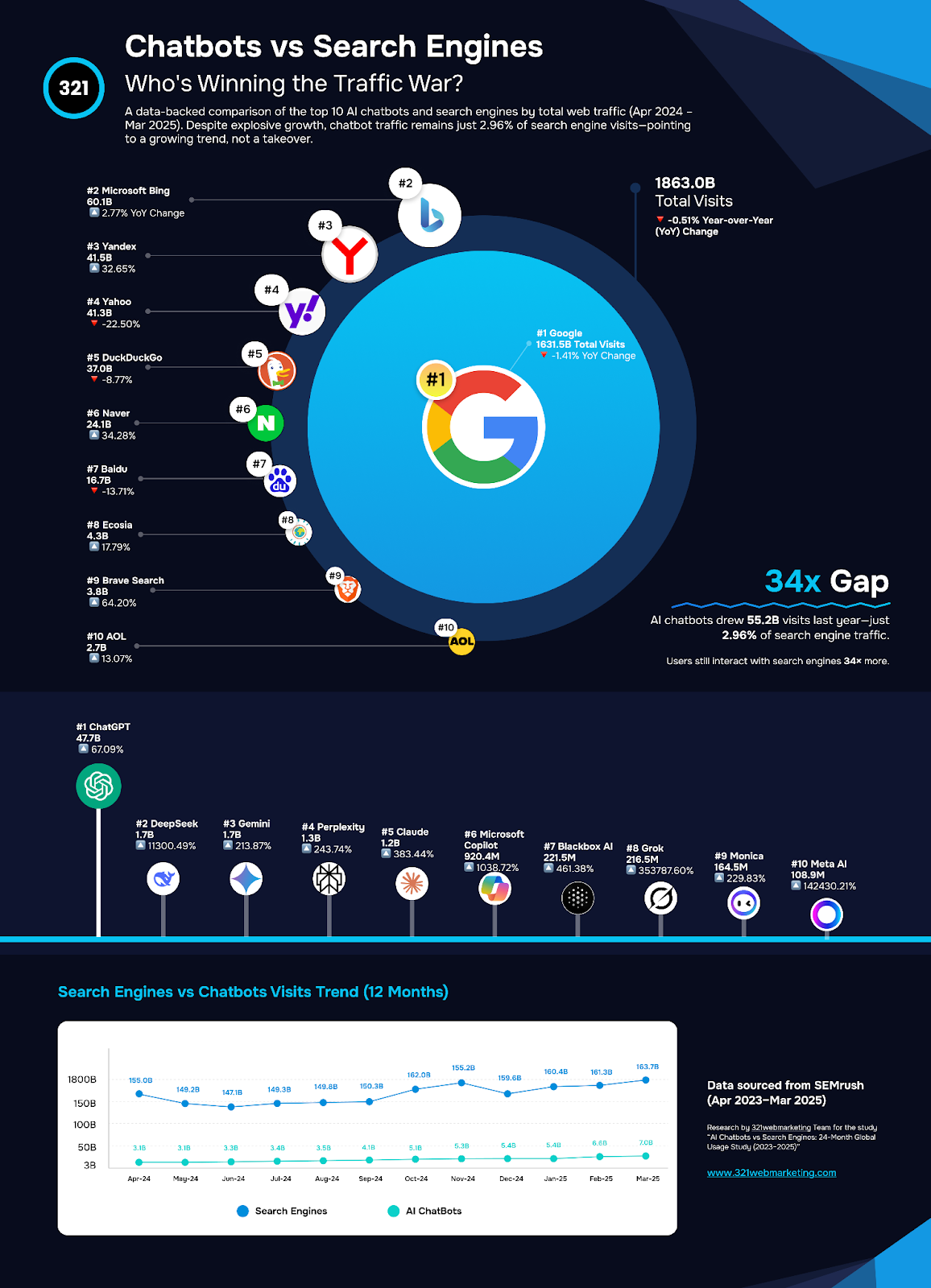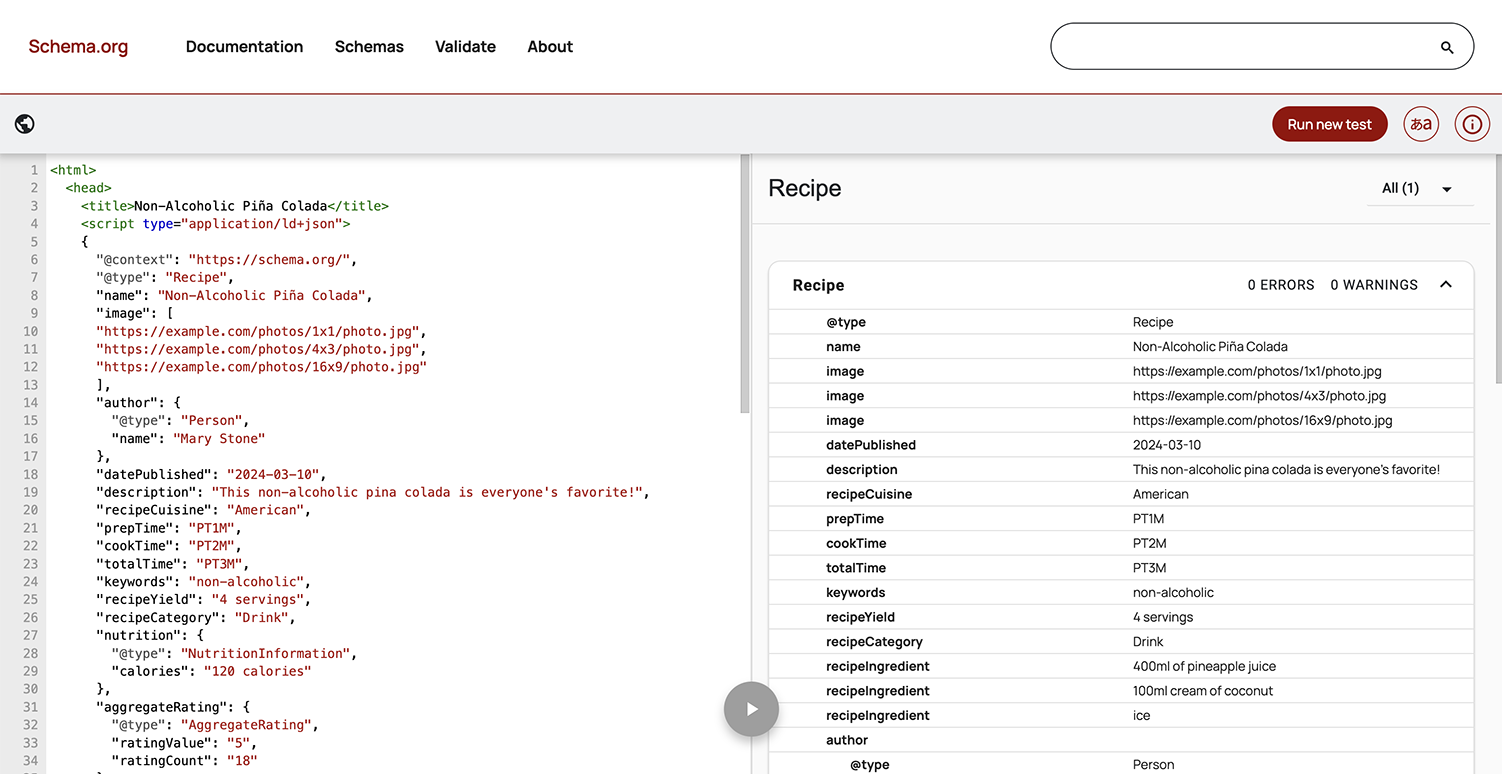How to turn SEO wins into GEO dominance
If you’ve already invested in SEO, you’re on track for GEO. See how to surface your content in AI search results.
Generative engine optimization (GEO) is quickly becoming essential for brands that want to stay visible in an AI-driven world. It’s the practice of optimizing your content so tools like ChatGPT, Gemini and Perplexity can surface it. The good news? If you already have a solid SEO strategy, you’re off to a strong start.
GEO builds on the fundamentals of SEO — just with a few crucial additions. Think: clear TL;DR summaries, FAQs written in natural language, accurate schema markup and content that builds brand authority and trust (following Google’s E-E-A-T principles).
AI search may still represent a small share of overall traffic, but it’s growing fast. Now’s the time to align your SEO and GEO efforts — before your competitors do.
Everyone’s talking about AI and for good reason. It’s one of the most significant innovations in decades. But it’s not a silver bullet. Like any tool, it only creates value when applied with strategy. GEO is one way to do just that.
Understanding GEO — and how it builds on SEO
You may not be familiar with GEO yet, but it is catching on as the phrase that describes optimizing for AI search. It is also called AEO or answer engine optimization.
Though they are related, they are sometimes used differently and are not entirely interchangeable. Think of it this way: You need to optimize your website and its content to show up in ChatGPT, Gemini, Perplexity and the like.
Here’s the great news. GEO requires efforts that a comprehensive SEO or search engine optimization campaign already covers.
For example:
- Creating content that answers the questions your customers have.
- Optimizing your schema to help search engines and AI understand your content.
- Thinking about your customers’ context when they search. Your goal is to show up with the right information at the right moment.
- Remembering that Google E-E-A-T (experience, expertise, authoritativeness, trustworthiness) also matters for GEO.
- Building brand awareness and authority.
- Creating high-quality content that is authentic and accurate.
Remember rich snippets? Those cards that used to show up in the SERPs? For now, think of AI search as a new paradigm with lower referral traffic.

Keep in mind, AI-driven search still makes up less than 3% of market share.

This number will continue to increase as more and more people get comfortable with AI as a search alternative. Embrace this new technology and stay ahead of the curve.
Dig deeper: How marketers can succeed with generative engine optimization
You’re already on the right track if you have a strong SEO campaign. You’ll want to pay extra attention to a few things to boost your visibility in AI search results:
- Create strong FAQs that use real client questions and answers from you.
- Build your brand and domain strength as a trusted resource.
- Dial in your Schema markup beyond the basics.
- Include quotable sections in content and always include a TL;DR segment in your content.
Let’s look a little closer at each of these.
FAQs are your secret sauce
Large language models (LLMs) use natural language to find and generate answers to real user questions. LLMs generate answers based on patterns in their training data and sometimes by retrieving live-indexed content.
Enter FAQs — well-structured Q&A pages are especially useful to AI engines, especially when paired with FAQ schema. LLMs rely on content structured in natural language, like FAQs, which help them provide clear, direct answers from live data or indexed content.
Remember that AI engines will not always use your content as-is and may include answers from other sites in their search results. Ensure your FAQ content is spot-on and completely solves the user’s problem.
Create and structure your FAQ pages using real questions and answers. Also, include FAQ snippets for specific service and product pages. This is helpful for your customers and AI search engines.
Build your brand and Google E-E-A-T
Just like search engines, AI engines are looking for content they can trust. Trust comes from brand recognition, experience, expertise, authoritativeness and trustworthiness. This is known as Google E-E-A-T.
Google has written extensively on E-E-A-T and even included definitions and instructions in their Quality Raters Guidelines to stress the importance of these attributes.
Google has focused on producing search results based on E-E-A-T for quite some time now. They want to ensure that the results they produce are real and trusted.
Building your brand and E-E-A-T takes effort but pays dividends in the long run. Focus on the following:
- Link building: Link your site to popular websites with high authority. This is generally a manual task, and there is no easy way to do it. Use a trusted partner to reach out to high-ranking sites to get your site listed.
- Brand recognition: Focus on guest posting, podcast appearances, social media engagement and mentions on high-value sites. Use your subject matter experts (SMEs) as content resources and brand ambassadors on high-authority websites.
- High-quality content: Solve real problems your customers have. This is your opportunity to build trust and demonstrate your value to your clients, Google and the AI engines. Again, use your SMEs to create this content and garner visibility.
- Be a resource: Participate in chats and answer questions on Reddit and Quora. Comment on social posts with helpful answers. Send your SMEs to speak at conferences and create authoritative content.
These actionable steps make your content more discoverable and useful, increasing the chance it will be surfaced by AI tools and cited in AI-powered answers.
Dig deeper: Why visibility is now the most important marketing metric
Dial in your schema markup
There’s been a debate lately about whether schema still matters. Well, I’m here to tell you it matters.
Schema markup is structured data in your website’s HTML that helps search engines and AI better understand page content and serves as a quick reference guide for all search engines, including AI engines.
Schema markup is useful, but it’s essential that it is correct. If you try to game the system and stuff keyword data in your schema markup unrelated to the page’s content, your page will not rank or get de-listed. Schema does not replace good content — it supplements it.
There are lots of plugins on WordPress and other CMS platforms that allow you to add schema data. It’s as simple as filling out a form and the results look something like this:

It is essential to include schema markup that is as accurate as possible. In addition to regular schema data, make sure to focus on:
- FAQ schema in your FAQ content.
- Article schema in your blog content.
- Location schema in any local campaigns.
Use TL;DR in your content
TL;DR stands for “too long; didn’t read.” It’s a quick summary of whatever your content is about. Refer to the opening of this blog to see what I mean.
Clear TL;DR summaries help AI systems identify and extract concise answers, which may improve how your content is used. It gives the engines short summaries they can use for queries to provide answers to people’s questions.
It’s also incredibly helpful for the user to quickly understand the content so they can decide if they want to keep reading. And, of course, schema impacts user experience. Making information easy to find and digest may keep readers on the page longer. It can also help AI locate info quickly.
Think of schema as a table of contents for the search engines and Generative engines. They can quickly crawl schema content to determine what the information on the page is all about.
GEO and SEO go hand in hand
GEO and SEO work best together. They’re like peas and carrots. If your SEO strategy is solid, you’ve laid the groundwork for success in AI-powered search. The core principles still apply — GEO just asks you to build on them with a few targeted enhancements.
Add to that:
- FAQs.
- Great authoritative content.
- Appropriate schema.
- TL;DR.
This combo can help grow your qualified traffic and brand visibility, even though some AI answers might keep users on the AI platform without sending traffic to your website (a.k.a. zero-click risk).
As SEO expert Lily Ray points out, SEO is not going anywhere. It is more important than ever. However, GEO is going to grow in user adoption and search volume. If you focus on both using the tips outlined above, you will be doing all the right things to rank.
Remember, these are all just tools and machines. Strategy and customer experience are your recipe for success.
Contributing authors are invited to create content for MarTech and are chosen for their expertise and contribution to the martech community. Our contributors work under the oversight of the editorial staff and contributions are checked for quality and relevance to our readers. MarTech is owned by Semrush. Contributor was not asked to make any direct or indirect mentions of Semrush. The opinions they express are their own.
Related stories